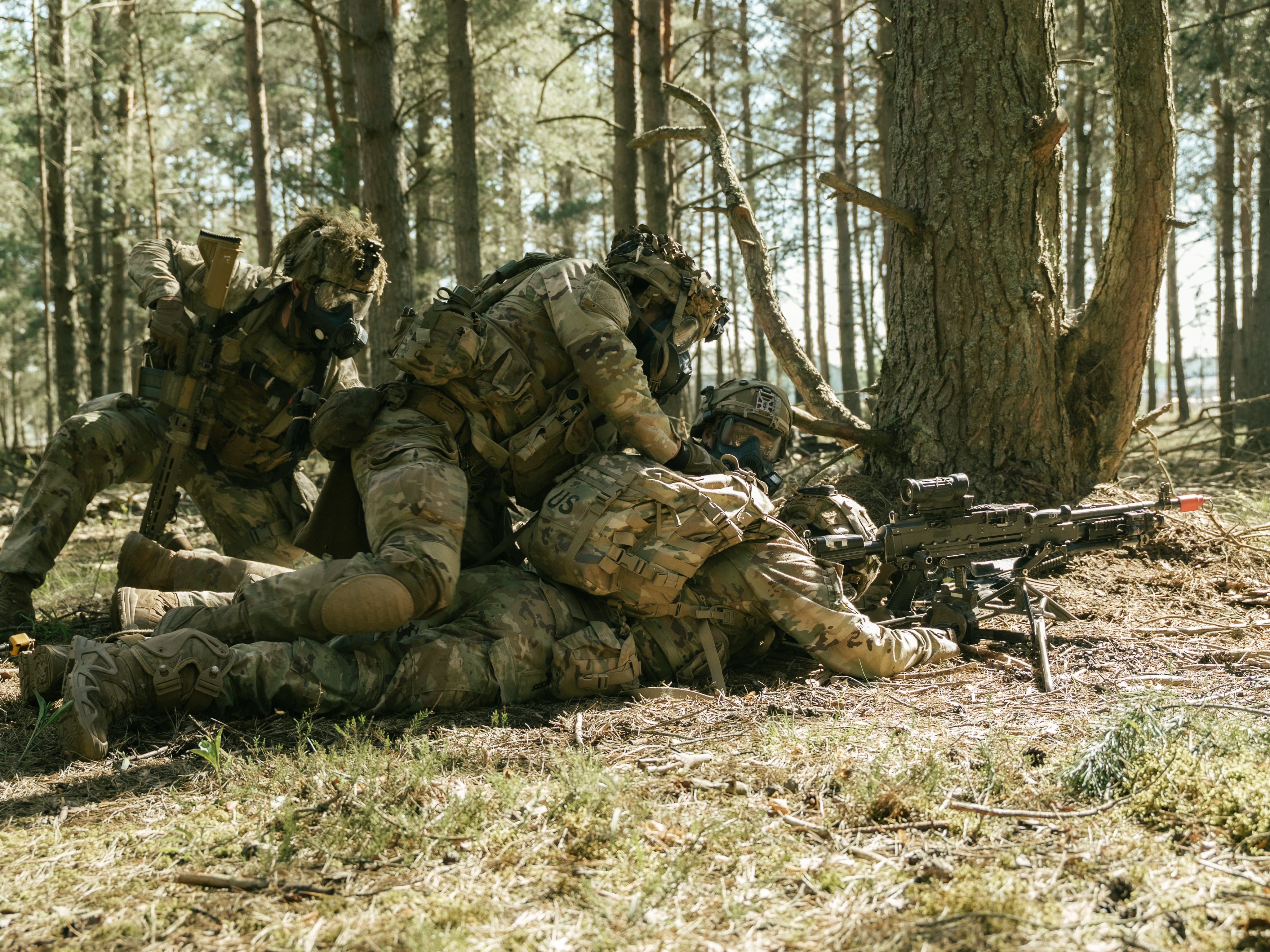
Armies should train for the battlefields they fight on. But the U.S. Army’s training sites don’t replicate the terrain that the Army is most likely to fight on, such as the Baltic states, Korea and Taiwan, warns a U.S. Army officer.
For example, the Army’s largest training site — the National Training Center — is located in the Mojave Desert.
“But the Army will likely fight the nation’s primary adversaries in the forests and bogs of the Baltic, the mountains and farms of Korea or the beaches and rice paddies of western Taiwan,” wrote Maj. Robert Rose in an essay for the Association of the United States Army.
Rose fears that troops trained in the wrong terrain will end up using the wrong tactics. Desert, jungle, mountain and steppe offer very different conditions of concealment, mobility and fortification.
“Without training in appropriate environments, we risk developing counterproductive techniques,” wrote Rose, who is chief research officer at the Modern War Institute at West Point.
For example, units training in the open desert at NTC assume that their command posts must frequently displace to avoid being targeted. But in Ukraine, where vegetation offers more concealment and Russian drones are omnipresent, Ukrainian command posts prefer not to break cover.
“When you’re moving, you’re much easier to see,” Rose told Defense News. “You also have to break down your command post, which really disrupts your command control. So there is this potentially very damaging lesson that they’re learning out there.”
Rose’s essay listed a variety of questions that can only be answered by training in an appropriate environment.
“What is the mobility of our current vehicles in the rice paddies of Taiwan or the bogs of the Baltic? Will vehicles be canalized to roads? How should infantry conduct antiarmor ambushes? How should units conduct effective engagement area development? What will be the range of engagements? How many mines should units carry? What methods should artillery employ for survivability? Will they have to regularly displace or can they dig in? Based on the water table, can they dig in?”
Ironically, some Army training sites were created precisely to mimic the terrain of potential battlefields. For example, the NTC is a successor to the Desert Training Center of World War II, which the Army created at the insistence of Gen. George S. Patton, who wanted his troops trained for desert conditions before they shipped out to the North African campaign.
“Although the Army adapted units to the terrain in which they would fight during World War II, today, the Army standardizes organizations and treats them as interchangeable parts,” wrote Rose. “The Pacific-focused Joint Pacific Multinational Training Center, established in 2022, is a step in the right direction, but it tends to train either on jungle archipelagos or in the Arctic, neither of which resemble the terrain of Taiwan or Korea.”

Rose believes that ideally, Army units would train on the actual terrain they would fight in, such as the Baltic states (and Taiwan, though he admits that would be more difficult politically).
“Our allies already own the land we would fight on,” he said. “Your units can build the techniques and standard operating procedures that are optimized for that fight, instead of trying to figure it out in the crucial early moments of a conflict.”
Rose also worries that the Army isn’t training for large-scale combat operations, or LSCO. The 1941 Louisiana Maneuvers, which involved 472,000 soldiers, proved crucial in preparing a small but rapidly expanding Army for big-unit operations (as well as weeding out incompetents from the pre-war officer corps).
LSCO seemed almost an anachronism for the small-unit warfare waged in Afghanistan and Iraq. But a conflict with China, Russia or North Korea is more likely to involve entire brigades, divisions and corps.
“Today’s exercises never approach this scale,” Rose wrote. “Most units only reach brigade-level training when they deploy to Combat Training Centers. Once a year, at the National Training Center, the Army has begun conducting division-level training, but it does not include the vital participation of subordinate maneuver brigades.”
Instead, the Army relies for LSCO on simulations that “lead the Army toward centralized processes that are ideal for winning computer games but not wars,” wrote Rose.
One reason for the lack of large-scale training is a lack of sufficient training space. Army Field Manual 3-0 Operations recommends divisions fight on frontages of up to 28 miles wide, and 53 miles for a corps.
Yet despite the U.S. being a continent-sized nation, environmental, economic and political concerns over use of public land make it difficult to find training grounds that are both large enough and have the appropriate terrain, such as forests.
In 1986, the Army had access to 14.5 million acres of land for training. By the early 1990s, when Camp Shelby, Mississippi, tried to use national forest lands, an Environmental Impact Statement generated more than 2,000 comments from more than 300 groups and individuals.
“Since there is no single agency responsible for federal and state land management, the Army has to navigate bureaucratic processes to obtain permission from multiple agencies managing the land and their constituencies,” Rose noted.
Rose suggests the Army take advantage of the Sentinel Landscapes Partnership, where federal, state, local and nongovernmental agencies coordinate sustainable land use around military installations.
He also recommends using former bases such as California’s Fort Ord, which features “coastline, farmland, hills and even abandoned facilities to use for urban warfare. It could serve as an ideal site on the continental United States to prepare units for defending Taiwan.”
“We cannot be overconfident and think that we can train in one environment and easily dominate our opponents in a completely different context,” Rose concluded.










-3.png)



